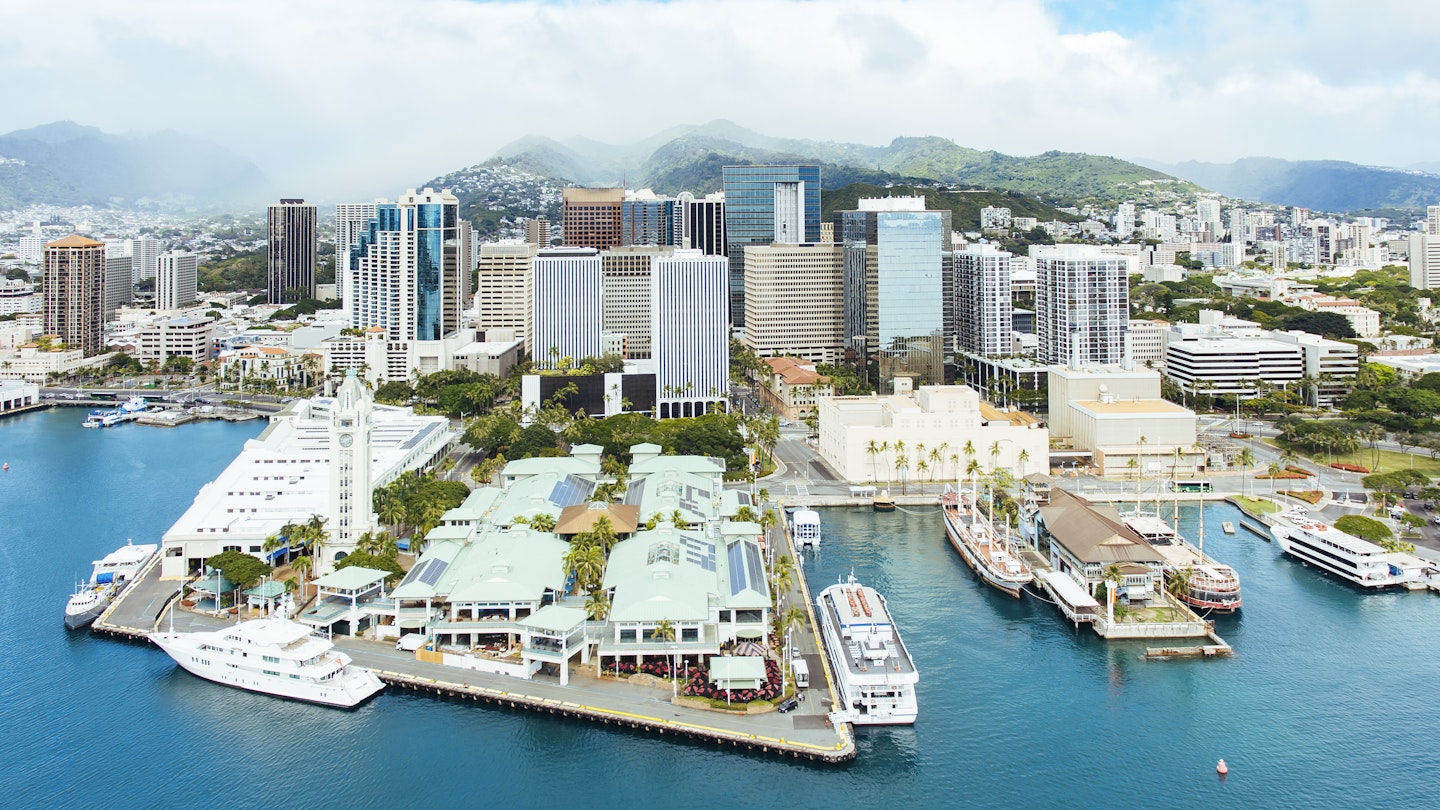Hawaii isn’t exactly renowned for its budget-friendly options; however, in the state capital, you can enjoy numerous attractions without straining your finances.
Honolulu is teeming with cost-effective activities ranging from markets and museums to breathtaking beaches and scenic drives, alongside various historical sites that narrate Hawaii’s intricate past. Below are some of the best free things to do in Honolulu.
Hawai’i State Art Museum

This public art museum features thought-provoking collections showcasing art from as far back as the 1800s, all connecting deeply to Hawaii. Located in a grand 1928 Spanish Mission Revival-style building, which is a nationally registered historic site, the museum has rotating exhibits of paintings, sculptures, photography, and mixed media, highlighting themes like the island’s Polynesian heritage and modern social issues.
Special events are particularly noteworthy. On the first Friday evening of each month, galleries remain open with live entertainment, creating a friendly atmosphere. Additionally, consider attending the free “Art Lunch” lectures on the last Tuesday of the month and the hands-on Hawaiian arts and crafts sessions on the second Saturday from 11 AM to 3 PM, designed particularly for children.
Puʻu ʻUalakaʻa State Wayside Park
Offering the best views in Honolulu, Puʻu ʻUalakaʻa State Wayside Park stands at a hillside location where sweeping panoramas capture Diamond Head on the left, Waikiki and downtown Honolulu at the center, and the stunning Waiʻanae Range on the right. It’s less than 2.5 miles up Round Top Drive from Makiki Street to the park entrance, which features historical signs detailing its past as a macadamia nut farm.

Chinatown Markets
The lively heart of Chinatown encompasses bustling markets and food shops, including noodle factories, pastry shops, and produce stands filling the narrow sidewalks. Established in 1904, the Oʻahu Market provides everything necessary for preparing Chinese cuisine: fresh produce, seafood, and various ingredients. At the northern end, Kekaulike Market offers a newer but equally vibrant atmosphere, complemented by Maunakea Marketplace’s popular food court at its top end.

Kawaiahaʻo Church
Recognized as the “Westminster Abbey of Hawaii,” this historic church, built in 1842, was constructed using 14,000 coral slabs extracted from nearby underwater reefs. This coral edifice, with its rich history, also harbors the tomb of King Lunalilo, Hawaii’s first elected monarch.

Izumo Taishakyo Mission
This Japanese Shintō shrine, established in 1906, exemplifies the cultural heritage that enriches Honolulu. Visitors engage in an act of purification at the entrance basin, and thousands of good-luck amulets are available, especially during the New Year celebrations.
Honolulu Museum of Art

Situated in a high-rise, the Honolulu Museum of Art displays extensive collections of mixed-media works reflecting modern and contemporary themes by artists from Hawaii. The gallery spans several floors, showcasing the rich diversity of local artistic talent.
Aloha Tower
Constructed in 1926, Aloha Tower stands as a historic icon of Honolulu. Once the city’s tallest structure, this ten-story landmark now serves as a visual marker for arriving visitors. Guests can enjoy free access to the observation deck, featuring panoramic views of the island and its waterfront.
Manoa Chinese Cemetery
Situated on Manoa Valley’s eastern slope, the Manoa Chinese Cemetery, established in 1852, is the oldest and largest of its kind in Hawaii. Visitors can walk through its serene grounds and reflect on local history while admiring the valley’s scenic views.

Washington Place
Once the governor’s residence, Washington Place has been a site of significant historical events. Originally built by US sea captain John Dominis in 1846, the building continues to host official functions.
Hawaii State Capitol
Constructed in the 1960s, Hawaii’s state capitol showcases postmodern architecture, with design elements reflecting the state’s volcanic origins and surrounding oceans. Although public access is limited, visitors can explore the open-air rotunda.

National Memorial Cemetery of the Pacific
The Punchbowl Crater, now home to the National Memorial Cemetery of the Pacific, honors over 50,000 soldiers. Its serene landscape offers scenic drives and events, including Memorial Day ceremonies.

Sand Island State Recreation Area
Situated conveniently between the airport and the port, this hidden gem offers a beautiful beach and extensive lawns. Visitors can enjoy scenic views while relaxing away from the hustle and bustle of city life.
Kuan Yin Temple
With its vibrant architecture, the Kuan Yin Temple in Honolulu is the oldest Chinese Buddhist temple in the area. The beautifully crafted interiors invite visitors to engage with its rich spirituality and culture.

Royal Mausoleum State Monument
Also known as Mauna ʻAla, this cemetery is the final resting place of Hawaii’s royal families. The manicured grounds and serene environment provide a tranquil place for remembrance.
John Young Museum of Art
Located near the UH Campus Center, the John Young Museum showcases a collection of artifacts covering the Pacific Islands, Africa, Asia, and Mesoamerica. The outdoor courtyard offers a lovely setting for visitors to appreciate art and culture.

Aliʻiolani Hale
This historic building, constructed in 1874, was initially intended as a royal palace. Today, it serves as a government building and features exhibits detailing Hawaii’s rich legal history.
Hiroshima to Honolulu Friendship Torii
This symbolic landmark reflects Honolulu’s long-standing relationship with Japan. The vibrant red torii gate signifies the cultural ties formed over centuries.

Tantalus-Round Top Scenic Drive
A scenic drive offering stunning views of tropical flora and the Honolulu skyline, wrapping around the Makiki Valley area. This area provides an escape into nature right above the city.
Keliiponi Hale
This historical pavilion, originally built for the coronation of King Kalakaua, serves as a venue for public concerts and community gatherings.

Cathedral of St. Andrew
Founded in 1861, this Anglican cathedral features stunning French Gothic architecture, making it an important part of Hawaii’s religious and cultural history.
This article was originally published on April 2, 2021 and updated on September 23, 2021.




